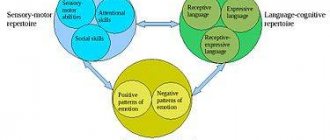Have you heard the phrase “Society doesn’t understand me, but neither do I understand it”? Or maybe you think so yourself? Then it is possible that you are a deviant, that is, a person with behavior deviating from generally accepted norms. Read more about this below.
The phenomenon of deviant behavior is not new. This phenomenon has always been present in society, is present and, perhaps, will be present. Deviants, that is, people who do not want or do not have the opportunity to live according to the norms of society, have always been and will be. However, each society has its own framework of behavior and concept of norm, which means that the number of individuals with such behavior may be different, just as the average level of deviation from the social norms of one society may differ from another.
Theories about the phenomenon of deviant behavior are primarily based on the search and assessment of its causes. I invite you to immerse yourself in history and take a tour of the development of society’s attitude towards deviations and understanding the essence of this phenomenon.
Deviant behavior and its causes, types, functions
Deviant (deviant) behavior is the motivational actions of an individual, which are fundamentally different from generally accepted values and rules of behavior in society, formed in a given culture or state.
It is represented by a social phenomenon that is reflected in mass forms of life and does not correspond to generally accepted rules of behavior. The criteria for deviant behavior are represented by moral and legal regulations. Delinquent behavior is represented by criminal behavior, which refers to illegal acts.
The concept of norm
When talking about deviations, it is important to define what is normal. I. A. Lipsky defines the concept of “social norm” as follows: rules of social behavior and human manifestations in the specific historical conditions of society that are officially established or developed under the influence of social practice.
That is, behavior that currently does not cause misunderstanding among other citizens is considered normal. Let me give you an example of the relativity of the concept “norm”. In the modern world, it is considered normal to modify your body (piercings, tattoos, colored hair), but in another era this was unacceptable and condemned. Now, of course, you can also find those who condemn, but in general body modifications are accepted.
Types of deviant behavior
- The primary stage of deviation is when a person allows himself to violate generally accepted norms of behavior, but does not consider himself a violator. The secondary stage of deviation - a person falls under the image of a deviant, society treats violators differently from ordinary citizens.
- Individual and collective type of deviation. Often, an individual form of deviant behavior develops into a collective one. The spread of violations is characterized by the influence of subcultures, the participants of which are represented by expelled individuals from society. Individuals predisposed to violating social rules are a risk group.
Examples of deviations
I will give examples of negative, neutral and positive deviations:
- The child was born into a prosperous full family. The parenting style was overprotective. Having reached adolescence, the child became uncontrollable: he began to blackmail his parents and insult his mother. Parents believed that adolescence is difficult for all children; they need to be patient. They did not take active measures to solve the problem; they reduced control and custody of their son. As a result, the parents did not notice how the boy got involved with bad company, where he became addicted to drugs.
- The girl has been shy since childhood. It is difficult for her to talk to a stranger, to make a request to someone. Mom believes that shyness is synonymous with modesty, so she makes no attempt to eradicate this character trait of her daughter. The girl has few friends; in class she is considered withdrawn because she does not greet her classmates and refuses to play group games during breaks. On the part of the teachers, there are no complaints against the girl regarding her studies, no sanctions can be applied to her, her shyness does not harm others, but is at the same time a form of neutral deviation.
- For many years, an employee of the research institute has been developing his own methodology for teaching preschool children to read. After defending his doctoral dissertation, he opened a linguistic center and began working with children according to his own program. After a few months, 4-5 year old children learned to read. The innovative activity of a scientist in this case is an example of positive deviation.
Types of deviant behavior
Socially approved - have a positive impact, directing society to overcome outdated norms of behavior and values that contribute to a qualitative change in the structure of the social system (genius, creativity, achievements, etc.).
Neutral – not bearing noticeable changes (clothing style, eccentricity, unusual behavior).
Socially disapproved – changes that bring negative consequences to the social system, resulting in dysfunction; destruction of the system, provoking deviant behavior that harms society; delinquent behavior; personality destruction (alcoholism, drug addiction, etc.).
Functions of deviants in society
- Rallying action in society, based on understanding oneself as an individual, the formation of personal values.
- Forms of acceptable behavior in society.
- Violators are presented as safety valves of the state, which relieve social tension in difficult situations of the state (for example, during the Soviet era, scarce goods and products were replaced with drugs that relieve psychological stress).
- The number of violators shows an unresolved social problem that needs to be combated (the number of bribe takers leads to the creation of new anti-corruption laws).
Typology of deviant behavior
found expression in the works of Merton, who represented deviation as a gap between cultural goals and approved behavior in society. The scientist identified 4 types of deviation: innovation – denial of generally accepted methods of achieving goals; ritualism - denial of goals and ways of achieving in society; retreatism - separation from reality; rebellion is a change in generally accepted types of relationships.
Manifestations of deviation
Psychology experts establish a person’s desire for deviant action according to a set of typical manifestations. Sometimes these characteristic personality traits are signs of mental disorders. Qualities typical of deviation indicate that a person, due to his own position, well-being, and disposition, is predisposed to asocial actions and involvement in illegality that destroys dependence.
Manifestations of deviant behavior include the following properties.
Aggression
Hostile behavior indicates ongoing internal tension
This person does not take into account the needs of other people. He is solely interested in achieving his own goals
He is not interested in the public's critical attitude towards his behavior. On the contrary, aggression is perceived by him as a method of achieving certain achievements.
Uncontrollability
Human behavior is aimed solely at maintaining one’s own interests. He is not interested in other people's judgment. It is impossible to realize what actions such an individual will take at a certain moment. The violent nature of an uncontrollable person cannot be contained.
Unpredictable mood swings
A person with deviant tendencies is characterized by frequent, causeless changes in mood. A person from a cheerful state suddenly becomes angry or starts crying. Such behavioral leaps are caused by internal tension and nervous exhaustion.
Desire for inconspicuousness
The unwillingness to share your own ideas and emotions with others is always due to something. One person withdraws into himself due to emotional trauma, another wants loneliness due to the lack of interference in his personal life. But it is impossible to exist in renunciation of society. Such behavior can lead to degradation.
Negative manifestations of deviant action are considered a social pathology. They cause damage to the environment, to the person himself. It is based on a person’s desire to function contrary to generally accepted laws and standards.
Theories of the origin of deviant and delinquent behavior
- The theory of physical types - the physical characteristics of a person influence deviations from generally accepted norms. So Lombroso in his works argued that deviant behavior is a consequence of the biological characteristics of the individual. Criminal behavior has its origins in the regression of the human personality to the primary stages of evolution. Sheldon believed that a person’s actions are influenced by 3 human traits: endomorphic type - a tendency towards fullness and roundness of the body; mesomorphic type – athletic build, wiry; ectomorphic type – tendency towards thinness. The scientist attributed deviant actions to each type, so mesomorphic types are prone to alcoholism. Further practice denies the dependence of physique and deviant manifestation.
- Psychoanalytic theory is the study of contradictory tendencies occurring in the mind of an individual. Freud argued that the causes of deviation are considered to be dementia, psychopathy, etc.
- Stigma theory - developed by Lemert and Becker. According to the theory, a person is labeled as a criminal and sanctions are applied.
- The theory of cultural transfer of deviance - this includes several theories. The theory of imitation - developed by Tarde, according to the concept - people from an early age find themselves in a criminal environment, which determines their future future. Differential association theory - developed by Sutherland. According to the theory, a person’s behavior directly depends on his environment; the more often and longer an individual is in a criminal environment, the greater the likelihood of becoming a deviant.
Deviation theories: history
People first began to think about the causes of deviant behavior and the peculiarities of its formation and development in the 19th century. In general, to this day, all theories can be divided into biologizing and sociologizing, psychoanalytic.
Biologization theories
The first theories arose from the standpoint of the biologization approach. They differed from each other in one way or another, but the general idea was the same - all deviations are innate.
- The initial one was the anthropological theory of crime, which belonged to C. Lombroso. In the USA, supporters of this theory were H. Sheldon, E. Kretschmer, A. Hooton, and in Russia - A. Drill. The main idea of this theory is that criminals are born. The occurrence of abnormalities at birth is due to somatic features, as well as features of the skull and face.
- This theory began to be developed, and as a result, in the 70s, along with the discovery of Klinefelter syndrome, a hypothesis arose about chromosomal abnormalities in criminals. That is, in this theory, the main explanation for the deviations was impaired genetics. However, after numerous experiments and studies conducted in the USSR and other countries, this hypothesis was officially refuted in 1972. But later, E. Wilson began to develop the idea of the decisive role of genetics in the formation of behavior.
- In the modern world, the biologization approach is not so relevant, but it still has its place. Walter Gove has a theory of gender and age factors, according to which difficult and serious crimes are more often committed by men. In addition, the scientist found that both men and women more often commit crimes in their youth (18-24 years old).
Modern proponents of the biologization approach call unfavorable individual characteristics the prerequisites for antisocial behavior. At the same time, the authors do not exclude the influence of social and psychological factors in addition to biological factors. As part of this, I. S. Noy and V. S. Ovchinsky talked about the need to study genetics, psychiatry, psychology and psychogenetics.
Sociologizing theories
Almost in parallel with the biologization approach, the sociologization approach is considered. Its representatives associate deviant behavior with the social conditions of people's lives. However, having identified the connection between behavioral deviations and the socio-economic conditions of society, scientists were unable to fully differentiate and explain the nature of deviant behavior.
Durkheim expressed the opinion that there is a certain level of crime in any society; it cannot but exist. And care must be taken to maintain this level and not allow it to grow, and not to eradicate it.
So, within the framework of the sociological approach, the following theories can be distinguished:
- Theory of functionality of deviations (anomie). Proponents of this theory were E. Durkheim, T. Parsons, J. Mead, R. Merton. These authors believe that the causes of deviations are the devaluation of behavioral norms. This phenomenon is characterized by anomie - destroyed solidarity in relation to basic values and norms. Individuals (groups) begin to look for deviant but effective ways of self-affirmation, provided that the approved methods do not work.
- The theory of stigmatization (“labeling”). M. Foucault, E. Hoffmann, E. Lammert, G. Becker studied this. Main idea: deviations arise as a result of imposing one’s opinions, definitions, and morals on an individual (group). Those with power can do this. In other words, for example, by calling a lagging student difficult and problematic instead of help and development, the teacher will get just such a child.
- Conflict theory and deviance. Deviation arises due to the conflict of social groups, the antinomy “negativism” - “positivism” appears. This opinion was shared by T. More, R. A. Saint-Simon, R. Owen, C. Fourier, F. Engels, G. Marcuse, R. Mills, R. Quinney, L. Coser.
- Cultural transfer theory. Identifying the identity between the methods of developing deviant behavior and any other behavior or activity. Russian and French sociologists N.K. Mikhailovsky and G. Tarde identified the mechanism of imitation.
- The theory of social disorganization. Many researchers (R. Park, E. Burgess, L. Wirth, R. McKenzie, P. Berger, T. Shibutani, E. Tiriakian) explained the emergence of deviant behavior by the influence of certain areas, places, environments that are comprehensively socially and personally disorganized.
- Theory of inclusion - exclusion (M. Foucault, J. Young). Deviations are explained by the differentiation of people into “excluded” and “included” in the political life of society.
Social psychological theories
From the middle of the 20th century, socio-psychological theories began to emerge. What they had in common was that researchers were looking for the causes of personality deviations among their immediate environment. That is, the relationship of the individual with the environment was analyzed.
- The basis of R. Merton’s theory of social anomaly was the hypothesis “about the withering away of moral norms during deviant behavior, which is caused by a mismatch between the goal and the means of achieving it among deviants.”
- From the theory of neutralization by D. Mate and T. Saik, it follows that a person understands moral standards and even accepts them, but justifies his behavior in different ways, most often by referring to other people and blaming others.
- E. Sutherland owns the theory of differentiated communication. This position explains the formation of deviations by the individual’s selective attitude towards the norms and values of his environment.
- The last theory in this approach is the theory of delinquent subculture, that is, a culture within a culture. The representative of the theory is A. Cohen. He believed that a subculture chooses for itself norms and values that are absolutely opposite to those established in the wider culture. R. Cloward and L. Oulin dealt with the same topic. They identified a criminal subculture, conflict and “withdrawal.” In Russia, I. A. Gorkova was actively involved in studying the influence of subculture on personality.
The Russian scientist Yu. A. Aleksandrovsky was also a representative of the socio-psychological approach. He said that in response to the socio-economic and political situation in the country, a person may develop social stress disorders. And this in turn affects behavior. I. I. Karpets and A. R. Ratinova put defects in the field of legal consciousness at the head of deviant behavior; N. F. Kuznetsova – defects in the psychology of individuals and social communities.
By the way, in Russia the first studies of deviant behavior began to be carried out in the 60s of the twentieth century (V.S. Afanasyev, A.G. Zdravomyslov, I.V. Matochkin and others). At the initial stage, these were studies of certain types of deviations. A significant theoretical contribution was made by V.N. Kudryavtsev, who was the first to consider social deviations as pathology, antisocial behavior. However, Ya. I. Gilinsky expressed an alternative opinion. From his point of view, deviations are a normal social phenomenon, a function of the social system.
Psychoanalytic theories
Another approach is psychoanalytic. Its main representative was S. Freud, later his ideas were continued by A. Adler, E. Fromm, K. Horney, W. Schutz. With this approach, researchers believe that the leading role in the formation of deviant behavior is occupied by certain qualities of the individual:
- feeling of increased anxiety;
- aggressiveness (this was considered the main quality);
- rigidity;
- inferiority complex;
- desire and desire to destroy everything.
Proponents of the theory said that all socially maladaptive forms of behavior arise due to:
- suppression of the individual’s true desires;
- strict blocking of their implementation;
- strict control over yourself and your emotions;
- low self-esteem.
Other scientists also gave the leading role to aggression - A. Bandura, A. Bass, L. Berkovts, S. Rosenzweig, among domestic scientists - S. N. Enikolopova, T. N. Kurbatova. But their rationale for the occurrence of aggression was different. The reasons, according to these authors, are not the inhibition of drives, but various social, lifelong factors.






